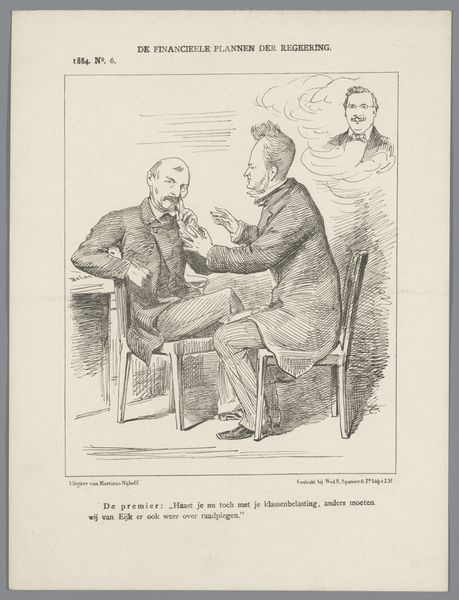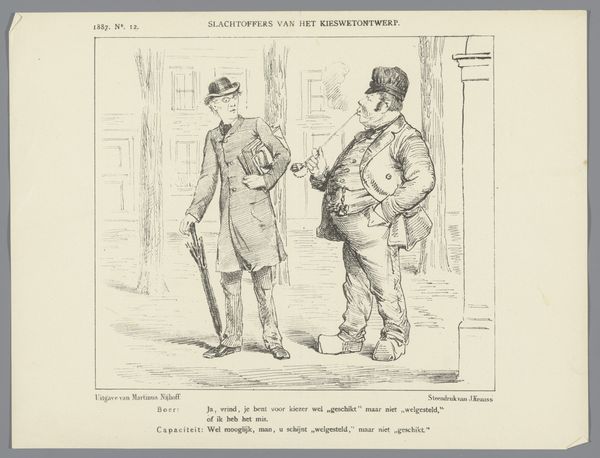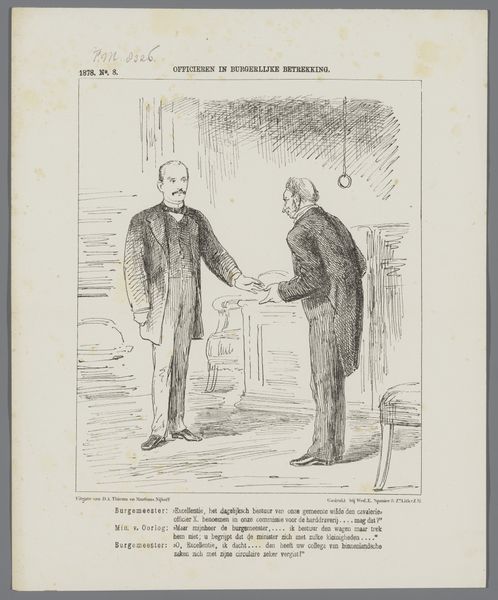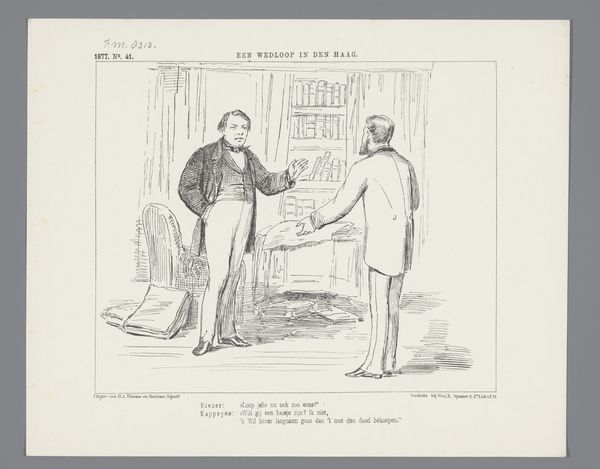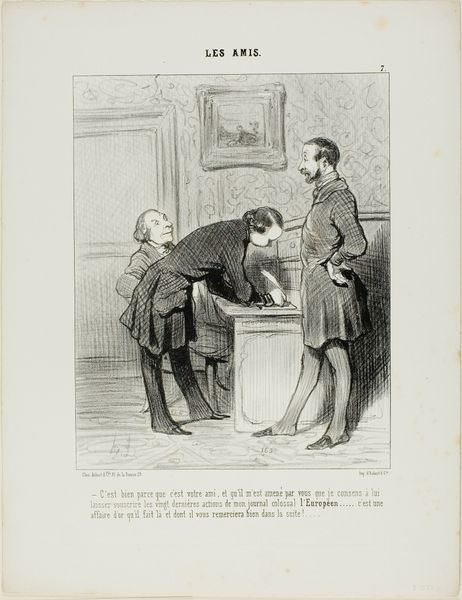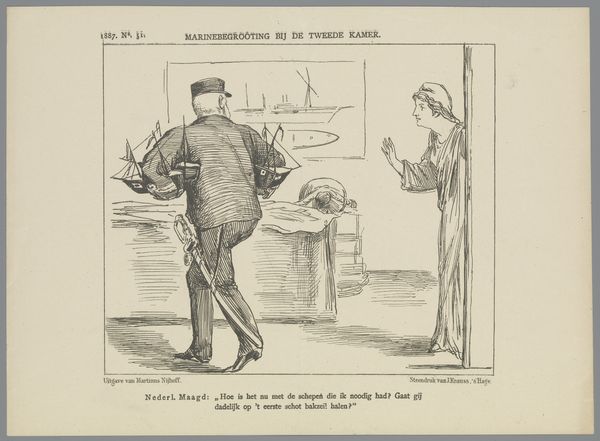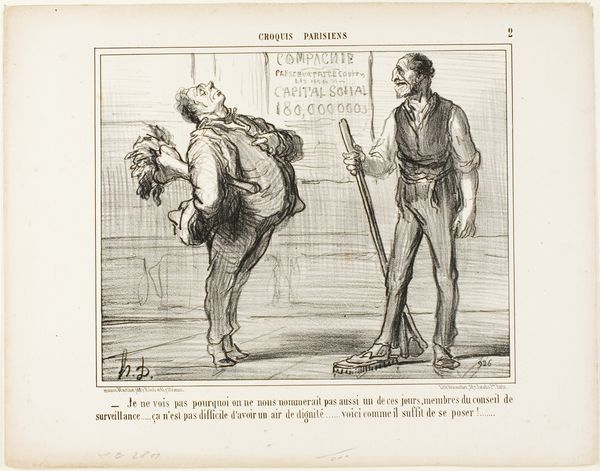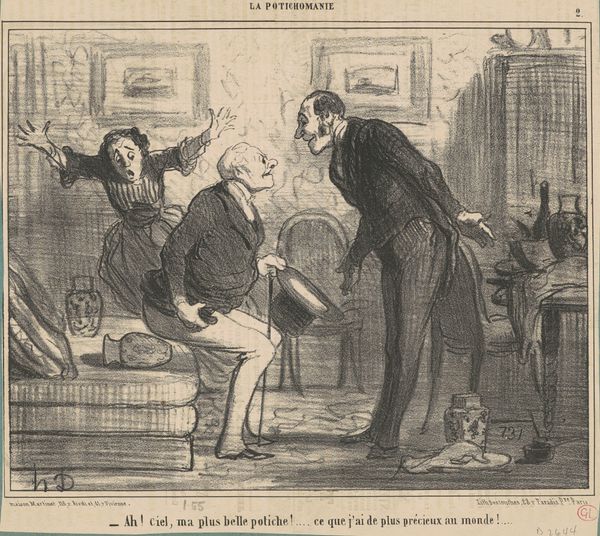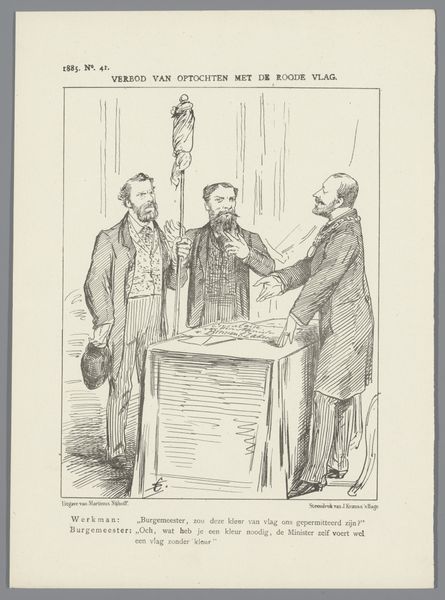
drawing, graphic-art, lithograph, print, paper, pen
#
portrait
#
drawing
#
graphic-art
#
comic strip sketch
#
aged paper
#
lithograph
# print
#
caricature
#
sketch book
#
traditional media
#
paper
#
personal sketchbook
#
idea generation sketch
#
sketchwork
#
comic
#
sketchbook drawing
#
pen
#
genre-painting
#
history-painting
#
storyboard and sketchbook work
#
sketchbook art
#
modernism
Dimensions: height 215 mm, width 275 mm
Copyright: Rijks Museum: Open Domain
Curator: This lithograph, dating back to 1884, is titled "Spotprent met Bismarck," a caricature created by Johan Michaël Schmidt Crans. What are your initial thoughts? Editor: Immediately, the exaggerated forms strike me – particularly Bismarck’s commanding stature and the other figure’s almost complacent posture. It establishes a power dynamic visually, even before one deciphers any symbolism. Curator: Indeed. Note the artist's confident use of line – how it delineates form and texture. The composition is deceptively simple, placing these two figures within a clear, if somewhat bare, space. Editor: Precisely! That bareness, that theatrical backdrop with the 'Amstelhotel De Mezger' sign – it hints at a deeper, perhaps ironic, commentary on power. The princes lined up behind Bismarck resemble trophies almost. Curator: Consider how caricatures, historically, use distortion to amplify certain characteristics, serving as vehicles for political critique. Here, the scale difference alone speaks volumes. Editor: Absolutely. Bismarck, depicted larger than life, embodies strength and authority. He’s almost like an oak, rooted and unyielding, while the seated figure exudes a more modern… perhaps diminished presence. Curator: This brings us to the layered symbolism at play. Bismarck's figure dwarfs not only the man seated but also the subtle queue of European royalty at the door—effectively visually undermining the sovereignty of others, like a puppet master holding Europe "under his thumb," as is written below. The placement of the Amstel Hotel above him suggests the financial stakes too, which subtly alters the perception. Editor: The artist utilizes recognizable tropes to send very clear message about sovereignty. This isn’t just a portrait; it's an argument about the shifting tides of political power visualized on a single sheet of paper. Curator: It is the marriage of form and symbol to underscore a historical narrative with lasting resonance, indeed. Editor: Seeing how artists deploy established symbolic language for communication gives one a fascinating glimpse into that past world’s hopes, fears, and beliefs.
Comments
No comments
Be the first to comment and join the conversation on the ultimate creative platform.
